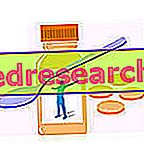Stretch Marks
Stretch marks are a clear trace of skin extension caused by sudden weight gain or pregnancy.
The middle layer of the skin is formed by tearing the dermis; in particular, they arise due to the breakage of elastic protein fibers.

Generally, stretch marks appear more frequently on: thighs, abdomen, hips, breasts and arms.
In appearance and healing, personal characteristics play a fundamental role; however, it must be specified that, once formed, these "scars" are almost indelible.
On the other hand, it is possible to prevent them with some tricks:
- By adopting a specific diet, designed to promote the supply of substances essential for maintaining skin elasticity
- Practicing physical activity
- Applying products for topical use such as oils or creams.
Why Change the Diet?
The diet against stretch marks is aimed at increasing the intake of nutrients essential for skin elasticity; it has an essentially preventive and protective meaning.
The "synthesis" and "adjustment" of elastic fibers is regulated by the histological functions of the dermis, which actively intervene to support the tissue. In essence, for how many nutrients can be introduced with food, if the organism does not actively intervene, the room for improvement is quite reduced.
The fundamental principle of the diet for stretch marks is to ensure that the dermal cells (fibroblasts) have adequate amounts of those nutrients necessary for the synthesis of macromolecules that give firmness and elasticity to the skin.
The dermis, characterized by a protein lattice synthesized by fibroblasts (reticular dermis), is composed of two types of proteins:
- Collagen: which gives resistance
- Elastin: which denotes elasticity.
If the consistency of the reticular dermis is compromised by malnutrition, the probability of the onset of stretch marks increases.
Nutritional Principles
Stretch marks are more extensive and evident in people who follow a poorly balanced diet or characterized by some nutritional deficiencies.
The most important dietary factors that should never be missing in the stretch mark diet are:
- Polyunsaturated fatty acids: especially the essential ones of the omega 3 group show a rather significant correlation with skin health; in particular, the deficiency manifests itself with a dermatological dryness that could decrease the elasticity of the dermis.
- Phenolic substances: powerful antioxidants that participate in the fight against free radicals; the latter can compromise the stability of fats in the skin's cellular membranes and break down hyaluronic acid.
Recall that one of the most important sources of oxidative stress are UV rays, which are also responsible for the elastic impairment of the dermis (see below).
- Zinc: antioxidant and important for collagen synthesis.
- Selenium: antioxidant.
- Vitamin A and provitamine A (retinol and carotenoids): they play a key role in protecting the skin from UV rays. Sun rays have the ability to activate skin enzymes that degrade elastin. Furthermore, carotenoids are powerful antioxidants.
- Vitamin PP or niacin: responsible for many enzymatic processes in the skin, improves the barrier effect of the skin. It is able to stimulate fibroblasts to collagen synthesis.
- Vitamin C or ascorbic acid: antioxidant, is directly involved in collagen synthesis. Regenerates vitamin E from its oxidized form.
- Vitamin B2 or riboflavin: the deficiency induces seborrheic dermatitis; it is therefore logical to think that it is a very important vitamin for maintaining skin health.
- Vitamin E or tocopherol: it is a powerful antioxidant and blocks the action of UV rays which, as we have said, tend to compromise the integrity of the elastin.
- Amino acids: they are the building blocks of proteins; in particular, a lack of essential ones could cause reduced synthesis of collagen and elastin in the dermis.
- Water: hydration is a fundamental condition for maintaining skin elasticity. Dehydration increases the possibility of developing stretch marks.
- Coenzyme Q10: is a direct antioxidant that acts at the level of the mitochondrial membrane and regenerates vitamin E from its oxidized form.
- Hyaluronic acid: is a polysaccharide (sugar) essential for connective tissue.
- Glucosamine and Chondroitin: famous for their protective ability towards cartilage, they also promote collagen synthesis.
What to eat?
All the nutrients and molecules useful for the prevention of stretch marks can be introduced in the right quantities following a balanced diet.
Let us now go into detail and try to better understand which food groups are associated with the various nutrients.
The table below simplifies and summarizes all the various nutritional sources.
| FOOD GROUP | NUTRITIONAL CONTENT FOR STRETCH MARKS |
Meat, fish and eggs |
|
Milk and derivatives |
|
Fats, seasoning oils and oilseeds |
|
Vegetables and fruit |
|
NB . Cereals, tubers and legumes (derivatives included) also contain some of these nutrients; however, they are all present in lower concentrations than the list above.
The diet for stretch marks must first of all be varied and not neglect the assumption of any of the food groups of which we have spoken
. In short, we summarize what can be recommended frequencies and portions of consumption:
- Meat twice a week *
- Fish two or three times a week *
- 3 whole eggs a week
- Milk once a day
- Natural yoghurt once or twice a day
- Cheeses (as a dish) once or twice a week * (grated on the pasta every day, one or two teaspoons)
- 1 or 2 teaspoons of raw oil on each plate
- One-time 30g oilseeds (replacing three teaspoons of oil) or about 10g a day
- Fresh fruit two or three times a day
- Vegetables two or three times a day (at least one raw).
* The frequency of consumption of these foods considers the use of a large portion that, if necessary, can also be divided into two smaller ones to be distributed on the same day.



